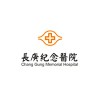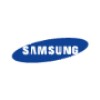
Acupuncture and Computer-based Training to Improve Attention Deficits in Patients After Stroke
StrokeThe purpose of this study is to determine whether acupuncture and computer-based attention training can be combined for more effective post-stroke attentional deficits.

Unilateral vs. Bilateral Approaches to Hybrid Stroke Rehabilitation
StrokeThe aim of the project is to compare the effects of unilateral hybrid therapy [unilateral robot-assisted therapy (RT)] + unilateral arm training (UAT)] and bilateral hybrid therapy [bilateral RT + bilateral arm training (BAT)] on motor function, daily function, mobility, life quality, and motor control strategy in stroke patients.

Intensive Statin Treatment in Acute Ischemic Stroke Patients With INtracranial Atherosclerosis
StrokeIntracranial AtherosclerosisPurpose: Intracranial atherosclerosis is a common condition in Korean population consisting over 25% of ischemic stroke etiology. American Stroke Association and Korean Stroke Society recommend antiplatelet and statin for the treatment of intracranial atherosclerosis. Besides lowering blood cholesterol levels statin also stabilize atherosclerotic plaque and eventually lower the risk of ischemic stroke. However, little evidence resides on the effect of statin treatment on intracranial atherosclerosis. Recent advance in high-tesla magnetic resonance imaging enables direct imaging of intracranial atherosclerotic plaque and further assessment of treatment efficacy of statin in stabilization of intracranial atherosclerotic plaque became possible.

Effects of Training Rhythmic and Discrete Aiming Movements on Arm Control and Functionality After...
StrokeThe purpose of this study is to verify the additional effects of rhythmic specific training, discrete specific training additional to conventional therapy on the upper limb after chronic stroke subjects on the outcomes: motor control and functionality.

tDCS in Acute Stroke Patients
Acute StrokeVery early after the onset of the focal perfusion deficit, excitotoxic mechanisms can lethally damage neurons and glia. Excitotoxicity triggers a number of events that can further contribute to tissue death. Such events include peri-infarct depolarizations (PID) and cortical spreading depolarization (CSD) within the peri-infarct zone or ischaemic penumbra. Noninvasive brain stimulation techniques such as transcranial direct current stimulation (tDCS) are emerging as promising tools, owing to their effects on modulating cortical activity. Experimental studies have indicated that cathodic polarization of the cortical surface blocks initiation of CSD. Moreover, it has been recently demonstrated in murine stroke models that cathodal tDCS exerts a measurable neuroprotective effect in the acute phase of stroke, decreasing the number of spreading depolarizations and reducing the infarct volume by 20 to 30%. The investigators propose here a pilot study, in acute middle cerebral artery stroke patients, with a double blind randomization: cathodal tDCS versus sham tDCS. The duration of this study will be two years. Fifty acute middle cerebral artery stroke patients will be included. The tDCS will begin within 4.5 hours of symptom onset. The main criteria of evaluation will be the extent of diffusion-weighted imaging (DWI) infarct volume between imaging on admission and 24 hours later. The investigators propose the hypothesis that in acute stroke patients, cathodal tDCS could be an adjuvant approach to recanalizing therapies.

Rectus Femoris Tenotomy Versus Botulinum Toxin A for Stiff Knee Gait After Stroke
StrokeSpasticityStiff knee gait is defined as the lack of knee flexion in the swing phase of gait. Stiff knee gait is a frequent condition among stroke patients leading to reduce gait speed and increase energy cost. In association with neuro-rehabilitation, botulinum toxin A injections in the rectus femoris is recommended. However, the botulinum toxin A effect is transient necessitating repeated injections. The aim of this study is to compare the benefit of the rectus femoris tenotomy in comparison with botulinum toxin A injections according to the 3 domains of the International Classification of Functioning Disability and Health of the World Health Organisation

Whole Body Vibration in Chronic Stroke
StrokeThis study is a randomized controlled trial aimed to assess the efficacy of a 10-week whole body vibration training program on physical functioning, societal participation and quality of life in individuals with chronic stroke. It is hypothesized that the whole body vibration program will induce significantly more gain in physical functioning, societal participation, and quality of life in chronic stroke patients, compared with the control group.

Evaluate the Efficacy of Bu-Yang- Huan-Wu Tang(BYHWT)on Ischemic Stroke
Ischemic StrokeClinical trial; Ischemic stroke; Bu-Yang-Huan-Wu Tang (BYHWT); Gait parameter; Quality of life Stroke is the third of ten causing death disease constantly, and it also is third of consuming healthy insurance budget. There is 17,000 peoples disable due to stroke every year in Taiwan. Although ischemic stroke patient may use t-PA intravenously treatment within 3 hrs after stroke onset in modern medicine, and no others method may effect to treat ischemic stroke patients, thus, the study about stroke is an important issue. Bu-Yang- Huan-Wu Tang (BYHWT) has been became a main stream for the treatment of stroke after Qing dynasty Wang Qing-Ren theory that is BYHWT may treat stroke due to pattern of qi stagnation and blood stasis in traditional Chinese medicine. A number of researches report that BYHWT can reduce blood viscosity, anti-inflammation, enhancing neuronal regeneration and angiogenesis, but above-mentioned about BYHWT limit in the level of animal study and the scientific evidence is insufficiency in human trial. Therefore, the purpose of the present study was to investigate the therapeutic effect of BYHWT treating ischemic stroke by using a strict clinical trial. We designed a randomized, double blind, placebo-controlled study to assess the therapeutic effect of BYHWT treating ischemic stroke. The study expects to finish the assessment of 120 patients with ischemic stroke in three years. The study divided into: 1) control group, receive placebo-BYHWT 3.0 g TID every day for continuously 6 weeks except ordinary medical care; 2) treatment group, the method is identical control group, but receive BYHWY. The main outcome was according to the changes of gait parameter including Speed, Cadence, Strike length, Gait cycle and Double support; and secondary outcome including the changes of Functional independence measurement scores and Barthel index scores, Ten Meters Walk Test, Short Physical Performance Batter, Berg Balance Test and WHO quality of life-brief (Taiwan Brief). We predict the results of the present can provide scientific evidence to proof BYHWT can improve neurological deficit and also can improve quality of life in patients with ischemic stroke.

Effectiveness of an Exoskeleton Gait Training Versus Manual Therapy in Subacute Post Stroke Patients....
StrokeThe main objective of the present study was to compare the effects of exoskeleton devices used in electromechanical-assisted gait training after stroke compared to over ground conventional physical therapy in a single blind research. The second objective is to research when the devices can be used with the best chance of success in the functional recovery of gait in people who are unable to walk independently after stroke.

Graded Motor Imagery for Patients Within a Year After Stroke.
StrokeThe aim of the study is to evaluate whether a graded rehabilitation approach including Implicit and explicit motor imagery training and mirror therapy is more effective than other treatments commonly provided in a neuro-rehabilitation department.
